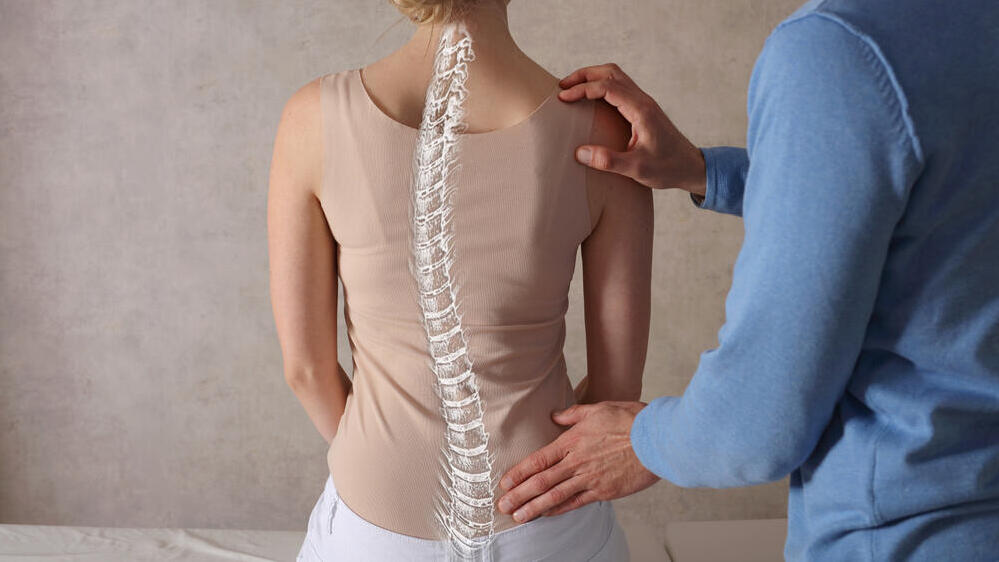"Straighten your back," "stand tall," "hold your neck like this." Who hasn't heard these directives? But is the perception that maintaining an upright posture prevents back pain correct? Accredited physiotherapists Daniel Markovich and Asaf Etzioni turned to professional literature to answer this question once and for all.
Read more:
Improper posture causes neck pain
Many people believe that poor posture is the main cause of neck pain. However, recent studies have shown that the connection between posture and neck pain is more complex than previously thought. While poor posture may contribute to discomfort in the neck, there is no definitive research data confirming that it is the cause of pain.
In a review conducted in 2019, no significant correlation was found between posture and neck pain in young individuals and adults up to the age of 50. However, a connection was observed in older age groups, but the question arises: is poor posture causing the pain, or is the pain leading to poor posture? The research did not provide a definitive answer to this. Nevertheless, the overall picture is much more complex and involves multiple variables such as stress, anxiety, misconceptions about neck issues and lack of morning physical activity.
'The therapist told me that my knee alignment is inward.' Does misalignment of the knee necessarily cause pain?
In order to address this question, we examined two literature reviews, one focusing on a younger population and the other on an older population with degenerative changes in the knees. Both reviews indicate that kneecap dislocation is, in fact, normal, and there is a lack of uniformity regarding the definition of what is considered "normal" and the therapeutic implications derived from these measurements.
Is misalignment of the knee necessarily the reason for developing knee pain? The answer is also much more complex, and it is likely that the fact that the knee alignment is not perfectly centered is not the sole cause of your knee pain.
'I have a pelvic tilt, it is rotated inward'
Many therapists often talk about pelvic tilt as a source of issues like back pain, knee misalignment and more. However, a literature review on this topic shows that the literature fails to demonstrate a clear link between inward pelvic tilt and pain in different parts of the body. In fact, studies show that 75%-85% of the population have an inward pelvic tilt, indicating that there is no definitive definition of "normal."
The review also reveals that existing interventions to correct pelvic tilt often fail to show significant long-term changes. Take, for example, the case of Chelsea player Raheem Sterling, who prominently has an inward pelvic tilt. Despite this, Sterling performs remarkably well under immense physical demands and consistently avoids prolonged absences due to back-related injuries. Similar examples of athletes abound.
'The doctor told me I have lordosis. Does this mean something is wrong with my back?'
The answer to this question is complex. On one hand, back pain is a common complaint among the population, but the literature does not demonstrate a clear daily connection to this phenomenon. Lordosis is measured by finding a specific angle through X-ray imaging (known as the "Cobb angle"), and no connection has been found between the angle of lordosis and the level of pain experienced by the patient. In other words, back pain does not necessarily worsen with a more severe lordosis.
What significantly affects pain in this population is the belief of the individual that their back is disordered due to pelvic tilt, meaning that fear and concern that something is wrong are more severe than the pelvic tilt itself. However, don't rush to blame pelvic tilt for your back pain; it is a complex issue, and according to the existing information, it is probably not the main cause. A prominent example in the context of pelvic tilt is Olympic-medal-winning sprinter Usain Bolt, who lived with it without any major issues and even broke all world sprint records. Do you think he paused for a moment to consider whether pelvic tilt affects his performance? Probably not.
What about leg length discrepancies; is it a serious problem?
According to a literature review we examined, about 90% of the population has different leg lengths, so it can be fairly concluded that having different leg lengths is, in fact, the norm. Does a difference in leg length cause pain? No significant effect was found for differences of up to 1.5 cm. In everyday loads that most people experience, it seems that even up to a 2 cm difference has no meaningful impact. If the difference is larger, there may be an effect on the extent of pain but, as with the cases presented at the beginning of the article, when dealing with pain, there is not one variable that causes it; the picture is much more complex than a 3 cm difference in leg length.
Chronic pain (regardless of the body part) is influenced by various factors such as lifestyle, mental state, proper load management and overall health. Understanding the complexity of pain is a crucial first step in recognizing that there is no single source for its existence. The experience of pain is highly complex, and we should refrain from attributing external imperfections as the primary source of the problem.




